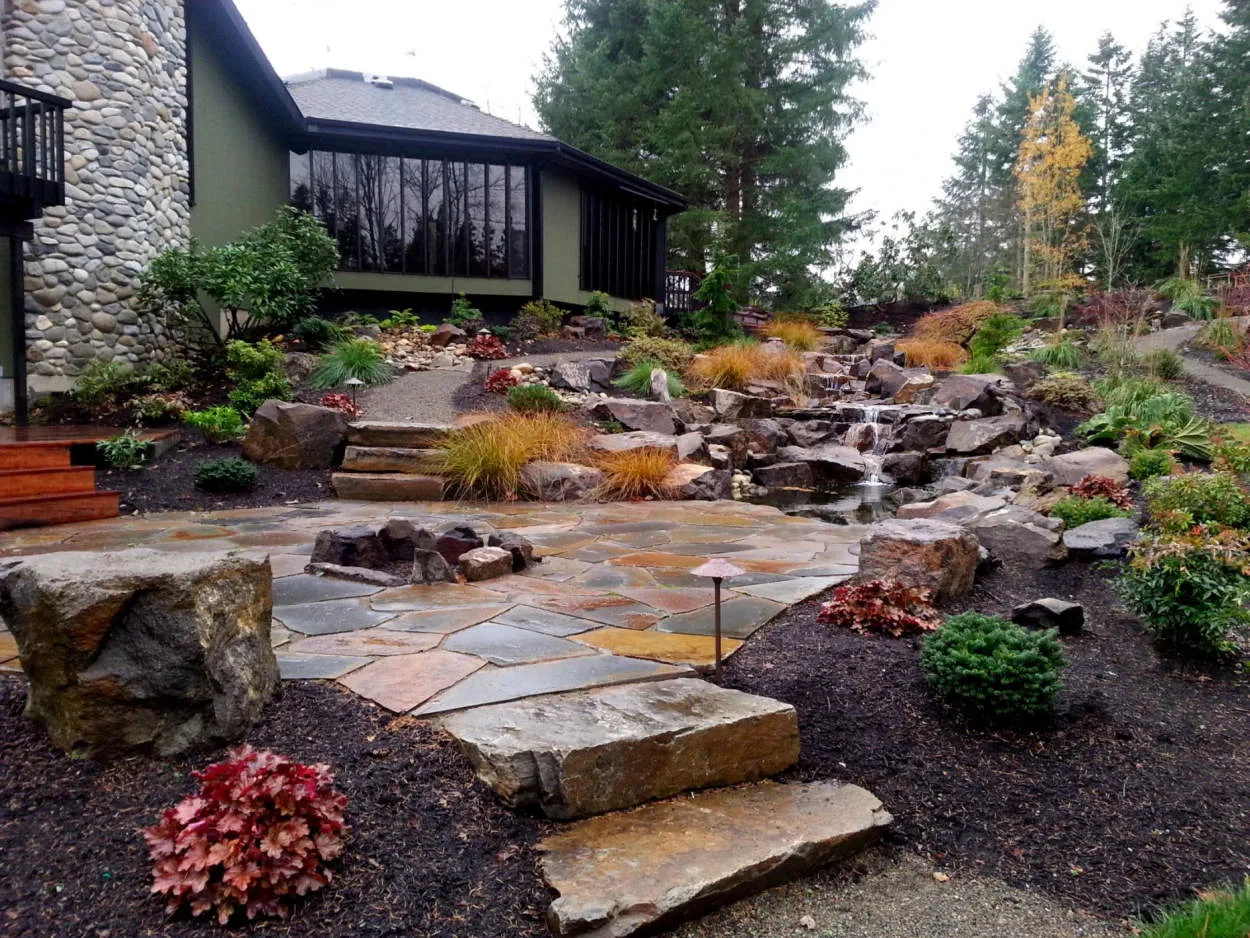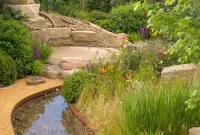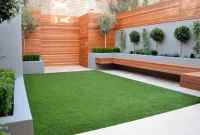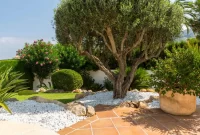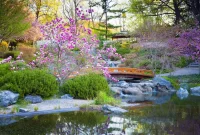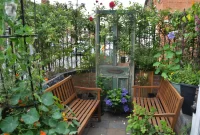Incorporating water features into garden design can bring a sense of serenity and beauty to any outdoor space. Whether it’s a small fountain, a pond, or a cascading waterfall, these elements add a soothing ambiance and create a focal point in your garden. Discover the endless possibilities of water features in enhancing your garden’s overall aesthetic.
Types of Water Features for Gardens
Water features can add tranquility, beauty, and a sense of serenity to any garden. Incorporating water features into garden design allows you to create a unique and refreshing outdoor space. Here are a few types of water features that you can consider:
1. Ponds
A pond serves as a focal point and creates a natural habitat for aquatic plants and fish. It can be large or small, depending on the available space in your garden. Ponds can be designed with rocks, plants, and waterfalls to enhance their visual appeal.
2. Waterfalls
Waterfalls are perfect for gardens that have a slope or elevated areas. They add a soothing sound of flowing water and provide a stunning visual element. You can create waterfalls by using natural stones, which can be stacked to form cascades of water.
3. Fountains
Fountains are versatile and can be incorporated into any garden design. They range from small, self-contained fountains to large, ornate ones. Fountains not only provide visual interest but also create a soothing ambiance with the sound of running water.
4. Water Walls
A water wall is a sleek and contemporary water feature that can be installed against a wall or as a freestanding element. It consists of a flat panel with water flowing down its surface. Water walls add a modern touch and create a calming atmosphere.
5. Birdbaths
Birdbaths are shallow water basins that attract birds to your garden. They not only serve as decorative pieces but also provide water for birds to bathe and drink. Birdbaths come in various sizes and designs, allowing you to choose one that complements your garden style.
Remember, the choice of water feature depends on the size and style of your garden, as well as your personal preferences. By incorporating water features, you can transform your garden into a peaceful oasis that invites relaxation and enjoyment.
Designing a Garden Around Water
Incorporating water features into garden design can create a serene and inviting atmosphere. When designing a garden around water, it is important to consider various factors to ensure a harmonious and aesthetic space. Here are some key points to consider:
1. Water Feature Selection
Choose a water feature that suits your garden’s style and size. Options include fountains, ponds, waterfalls, or even a simple birdbath. Consider the maintenance required, the sound you desire (gentle trickling or flowing water), and the overall visual impact.
2. Placement
Decide where to place your water feature. Consider the surrounding plants, sunlight exposure, and accessibility. Ensure that it becomes a focal point while remaining in harmony with the overall garden design.
3. Landscaping Around Water
Enhance the beauty of your water feature by incorporating suitable plants and landscaping elements. Choose water-loving plants such as water lilies, irises, or tall grasses to enhance the natural look. Add rocks, pebbles, or pathways to create a visually appealing composition.
4. Lighting
Consider adding lighting to your water feature to create enchanting effects during evenings and nights. Subtle lighting can enhance the ambiance and highlight the water’s movement, making your garden a captivating sight even after dark.
5. Wildlife Considerations
A water feature can attract a variety of wildlife to your garden, including birds, butterflies, and frogs. Create a welcoming environment by incorporating native plants, providing shallow areas for animals to drink or bathe, and maintaining clean water.
6. Safety Measures
If your water feature is deep or has strong currents, consider safety measures such as installing a fence or using floating plants to partially cover the surface. Ensure that children or pets cannot access the water feature unsupervised.
Designing a garden around water allows you to create a tranquil oasis right in your backyard. By carefully considering the selection, placement, landscaping, lighting, wildlife considerations, and safety measures, you can enjoy a captivating and harmonious outdoor space for relaxation and rejuvenation.
Maintenance Tips for Water Features
Incorporating water features into garden design can add a beautiful and soothing element to your outdoor space. However, it’s important to properly maintain these features to ensure they continue to function properly and stay in good condition. Here are some maintenance tips to keep in mind:
1. Regular Cleaning
To prevent debris buildup and maintain water clarity, it’s essential to regularly clean your water feature. Remove any fallen leaves, branches, or other organic matter that may accumulate on the surface or get stuck in filters and pumps. Use a net or skimmer to make the task easier and more efficient.
2. Water Quality Testing
Periodically test the water quality of your feature to ensure it remains balanced and healthy for any aquatic plants or fish. Test for pH levels, ammonia, nitrate, and other parameters depending on the type of water feature you have. Adjust any imbalances with appropriate treatments or additives as recommended.
3. Pump Maintenance
The pump is a crucial component of most water features. Check it regularly to ensure it is functioning correctly and there are no clogs or blockages. Clean or replace the pump filters as needed to maintain optimal water flow. Consult the manufacturer’s instructions for specific maintenance requirements and recommended intervals.
4. Winter Preparation
If you live in a region with freezing temperatures, it’s important to prepare your water feature for winter. Drain the water and remove and store any fragile components indoors to avoid damage from freezing and thawing cycles. Protect exposed pipes and equipment from freezing by insulating them properly.
5. Regular Inspections
Perform regular inspections of your water feature to identify any signs of wear, damage, or leaks. Repair or replace any faulty parts promptly to prevent further issues and maintain the integrity of the feature. Taking a proactive approach to maintenance can save you from more extensive repairs in the future.
By following these maintenance tips, you can ensure that your water feature remains a stunning focal point of your garden all year round. Remember to consult the specific instructions provided by the manufacturer and seek professional help if needed. Enjoy the tranquil ambiance created by your beautifully maintained water feature!
Attracting Wildlife with Water Elements
Water features are not only a beautiful addition to any garden design but they can also attract a variety of wildlife, adding a vibrant and dynamic element to your outdoor space. Incorporating water elements into your garden can create a haven for birds, frogs, butterflies, and other fascinating creatures. Here are some tips on how to attract wildlife using water features.
1. Install a Birdbath
A birdbath is a classic water feature that can be easily incorporated into any garden design. Birds are attracted to bathing and drinking from shallow, clean water sources. Place the birdbath in a visible spot, away from dense vegetation, and keep the water fresh and clean.
2. Create a Pond
A pond is a more substantial water feature that can support a greater range of wildlife. Add some aquatic plants, such as water lilies or lotus, to provide shade, shelter, and food for animals like frogs and insects.
3. Add a Waterfall
A waterfall not only adds a visually appealing element to your garden but also creates a continuous flow of water, attracting different species of birds and butterflies. The sound of running water can be soothing and helps to mask any unwanted noise.
4. Install a Dripping Faucet
A dripping faucet or a simple drip irrigation system can provide a source of water for animals that prefer trickling or dripping water. Set up a shallow basin underneath the faucet to collect the dripping water.
5. Plant Water-Friendly Vegetation
Choose water-friendly plants that can attract wildlife by providing them with a water source. These plants typically have shallow root systems and can tolerate moist soil conditions. Examples include cardinal flower, marsh marigold, and monkey flower.
6. Provide Shelter and Safety
Incorporate rocks, logs, and branches near the water elements to provide shelter and perching spots for birds and insects. Creating a safe and inviting environment will encourage wildlife to visit and stay in your garden.
By incorporating water features into your garden design, you can attract a diverse array of wildlife and enjoy the benefits of a thriving ecosystem right in your backyard. Creating a harmonious balance between nature and your outdoor space will bring endless enjoyment and fascination for both you and the wildlife that you will attract.
Conclusion
Incorporating water features into garden design can bring a touch of tranquility and beauty to any outdoor space. Whether it’s a small pond, a flowing waterfall, or a decorative fountain, water features add depth and visual interest to gardens. They provide a relaxing ambiance, invite wildlife, and can even help to mask noise pollution. By carefully selecting and positioning water features, homeowners can create a captivating oasis in their own backyard.

